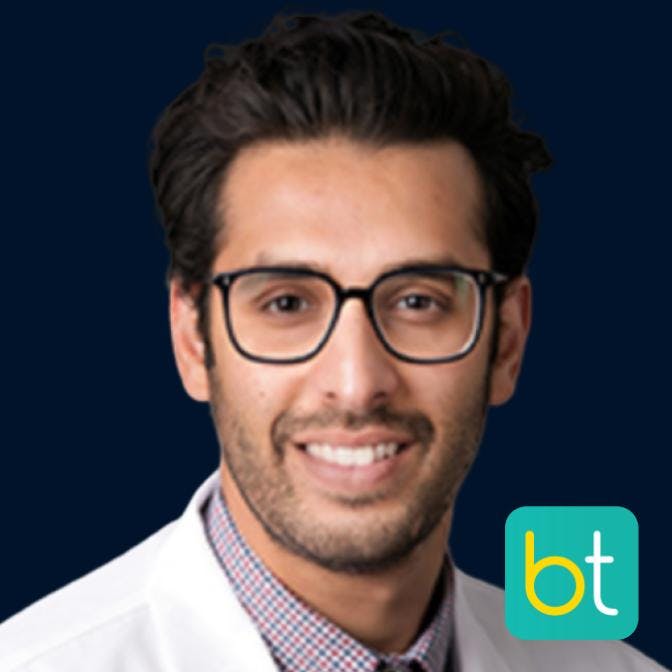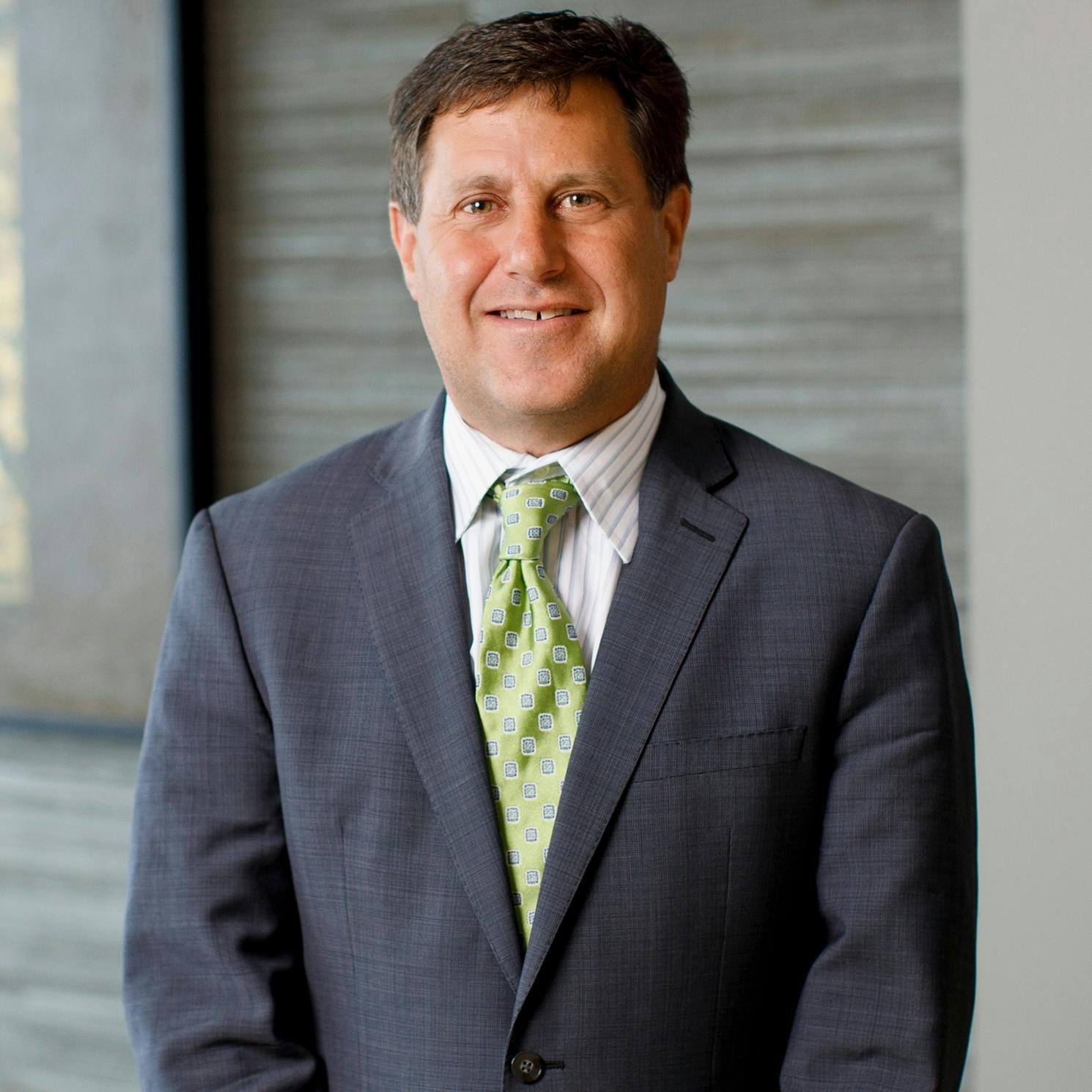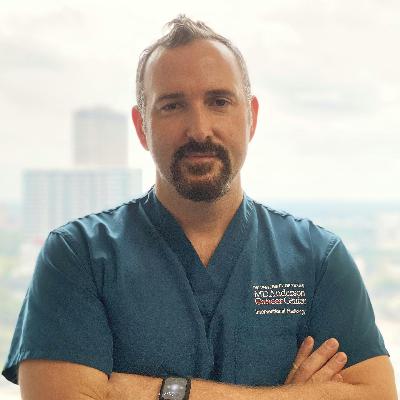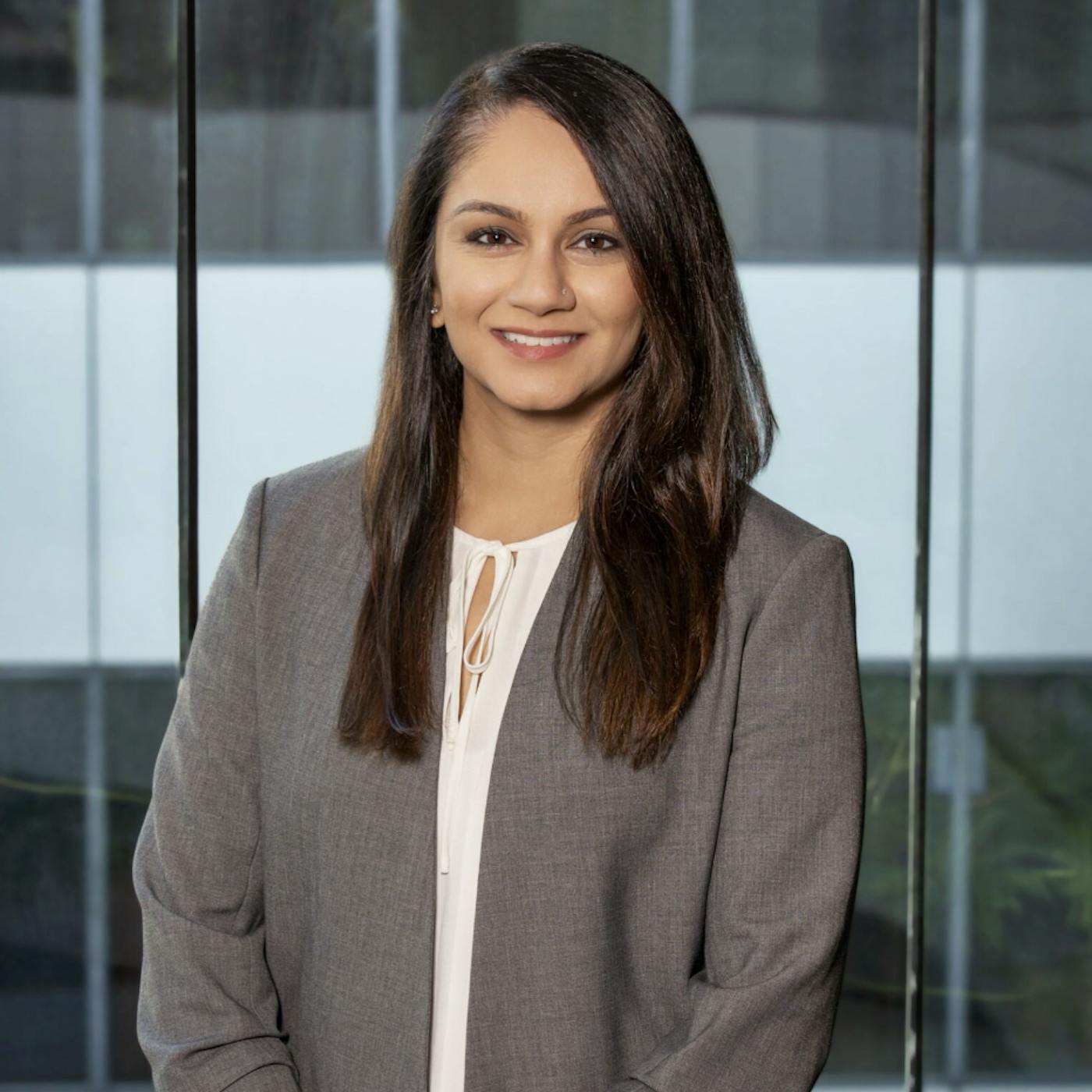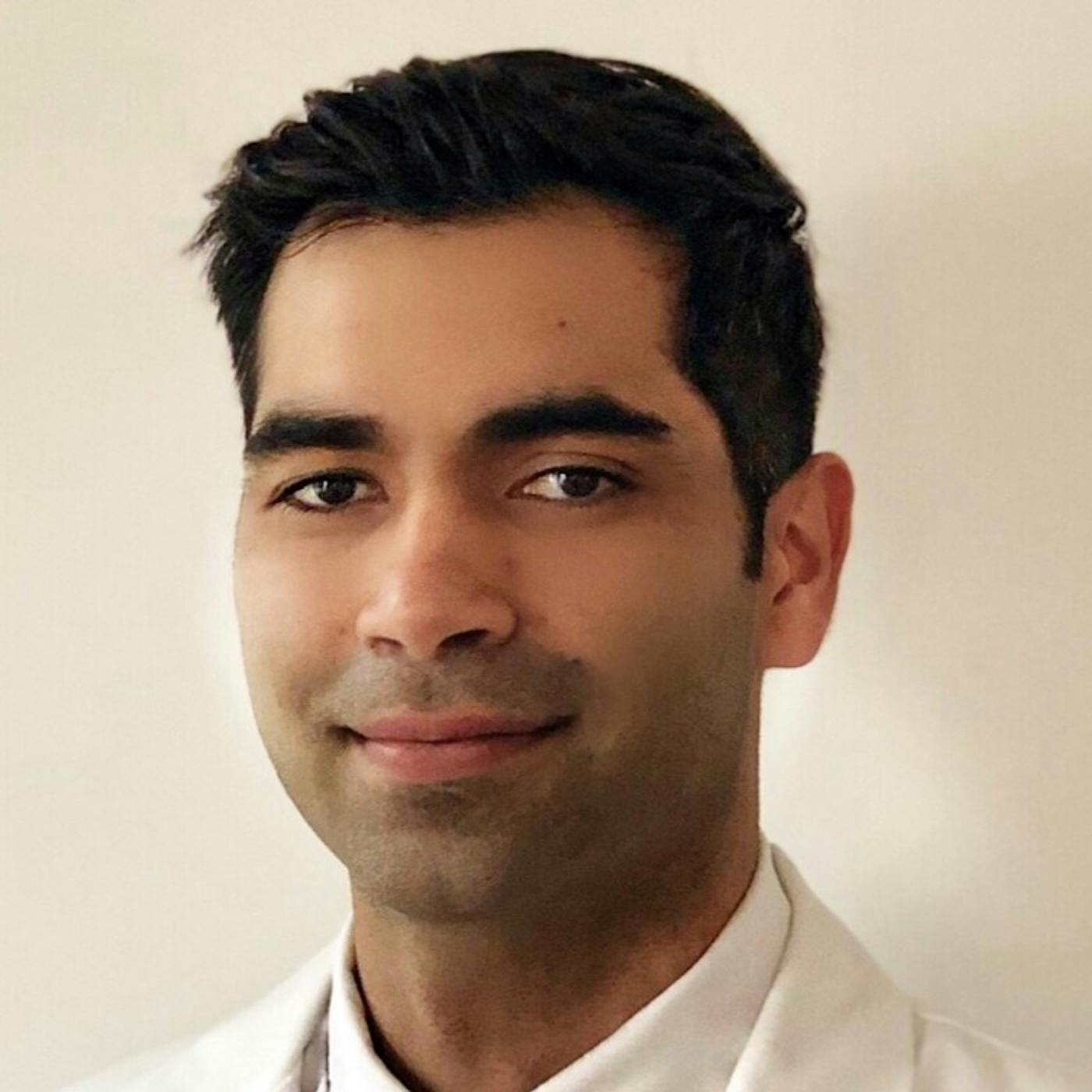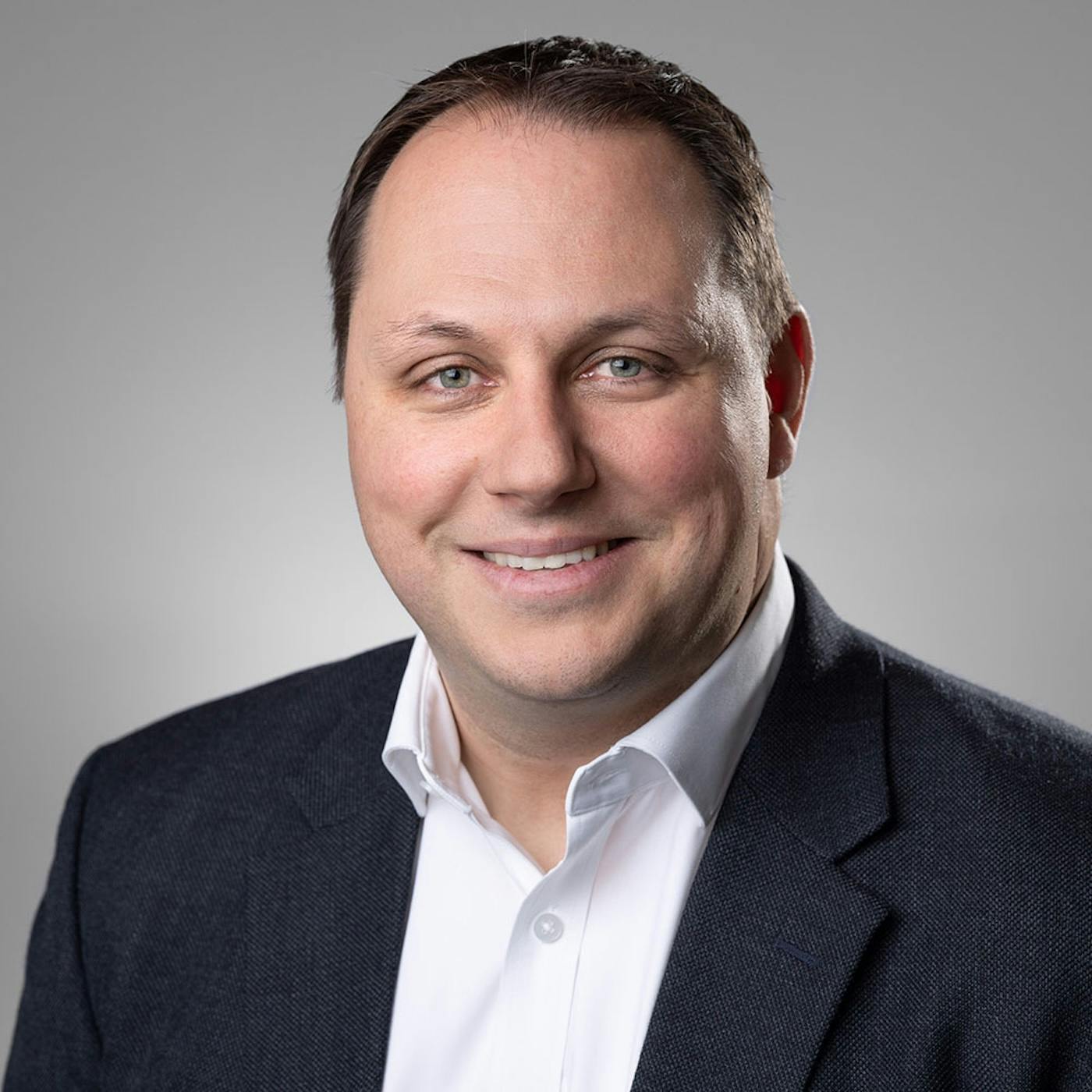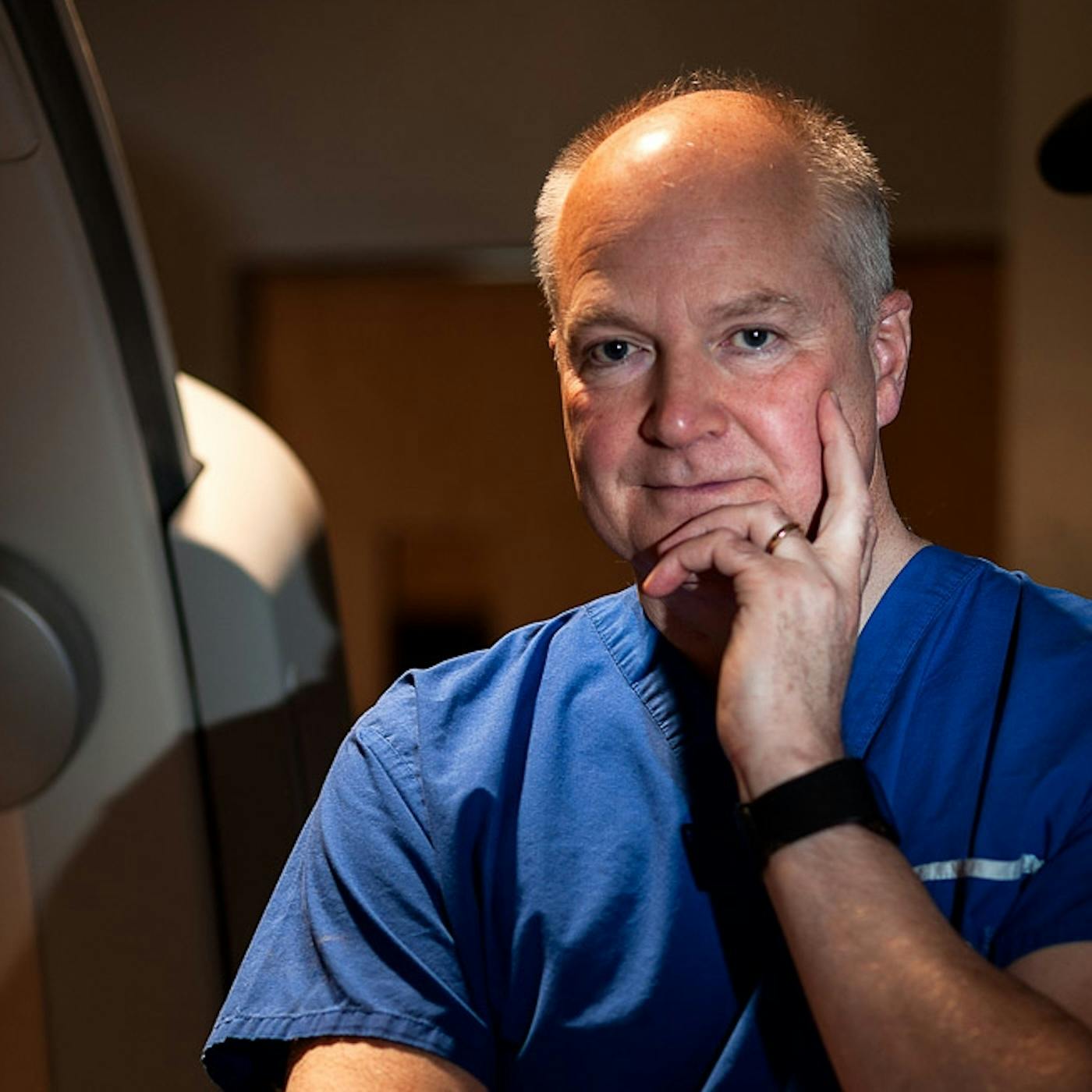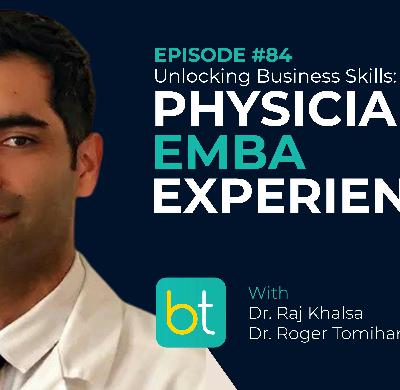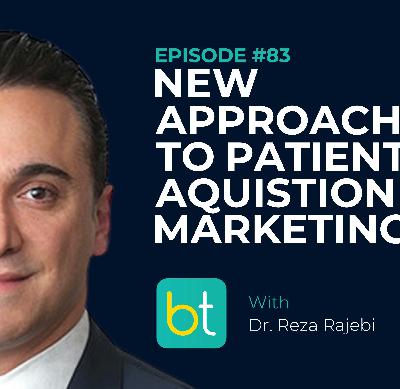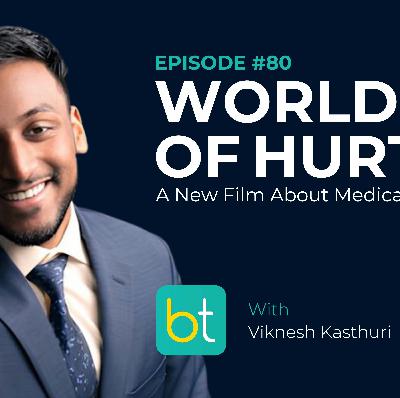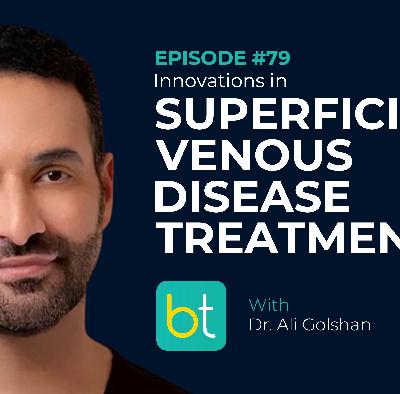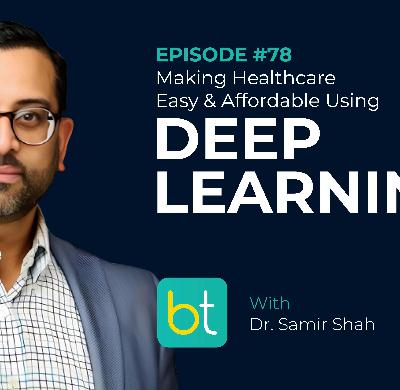Discover BackTable Industry
BackTable Industry

BackTable Industry
Author: BackTable
Subscribed: 15Played: 143Subscribe
Share
© All rights reserved
Description
Backtable Industry delves into the evolving landscape of healthcare, tackling topics such as models of care, advances in AI, and what these shifts mean for patients, providers, medical device / drug manufacturers, and the rest of the healthcare ecosystem. Listen on BackTable.com or on the streaming platform of your choice. You can also visit www.BackTable.com to browse our open access, physician-catered knowledge center.
97 Episodes
Reverse
What is the key to better revenue cycle management (RCM)? In this episode of the BackTable Podcast, host Dr. Aaron Fritts sits down with Dr. Heather Signorelli, a healthcare executive, physician entrepreneur, and founder of NatRevMD to provide a crash course overview of healthcare RCM and tips for the physician that’s looking to improve the financial health of their practice.
---
SYNPOSIS
Heather shares her journey from medical residency to establishing herself as an expert in the business aspects of healthcare. They discuss the importance of embracing failure, the perils and rewards of entrepreneurship, and the challenges of starting a business while balancing a full-time job. The episode offers valuable insights into the educational gaps in medical training concerning business operations and financial literacy, emphasizing the need for more thorough training in these areas. Heather also highlights her podcast, NatRevMD, as a resource for physicians aiming to enhance their knowledge of RCM and business management in medical practices.
---
TIMESTAMPS
00:00 - Introduction02:49 - Consulting and Early Career Experiences09:01 - Educating Physicians on RCM14:52 - Clientele and Specialties in RCM20:37 - The Power of Podcasting for Marketing24:45 - Physician Education and Business Literacy29:37 - Balancing Autonomy and Employment34:34 - Final Thoughts and Resources
---
RESOURCES
NatRevMD Podcasthttps://natrevmd.com/podcast-2/
PERT Consortium 2025 gives interventionalists the reins to tackle even the toughest saddle pulmonary embolisms. In this episode of the BackTable Podcast, host Dr. Aaron Fritts welcomes interventional radiologist Dr. Osman Ahmed and interventional cardiologist Dr. Jonathan Paul to discuss their experiences at the annual PERT Consortium in San Diego, and offer their perspectives on the latest developments in pulmonary embolism (PE) treatment.---SYNPOSISThe doctors delve into advancements and trials within the PE treatment space, including new devices and clinical studies that are set to shape the future of pulmonary embolism care. The conversation highlights the value of collaboration between interventional specialties, the safety and efficacy of various PE interventions, and the growing trend of using combined therapies. They also provide updates on their ongoing innovation with Flow Medical, describing their philosophy and motivation for developing a new device for PE treatment that incorporates real-time pulmonary artery pressures, mean systolic and diastolic pressures, and a potential for AI utilization in the future. ---TIMESTAMPS00:00 - Introduction01:23 - PERT Consortium Highlights02:11 - Emerging Clinical Trials and Innovations03:59 - Thrombectomy Devices and Market Trends12:37 - Flow Medical: Origin and Updates19:37 - Advanced Data Tracking in Cardiology20:45 - Remote Monitoring and Mobile Integration22:45 - Cardiologists’ Data-Driven Approach23:10 - Upcoming Studies and Data Insights24:10 - Interventional Radiology and Cardiology Collaboration25:07 - Access to Care and Procedure Adoption27:32 - Final Thoughts---RESOURCESPulmonary Embolism Response Team (PERT) Consortiumhttps://pertconsortium.org/ Flow Medicalhttps://www.flowmedical.co/ PEERLESS RCThttps://www.ahajournals.org/doi/10.1161/CIRCULATIONAHA.124.072364RESCUE-IIhttps://www.jacc.org/doi/10.1016/j.jacadv.2025.101789 PEERLESS II https://www.jscai.org/article/S2772-9303(24)01053-6/fulltextPulmonary Embolism - Thrombus Removal With Catheter-Directed Therapy (PE-TRACT)https://clinicaltrials.gov/study/NCT05591118 The HI-PEITHO Studyhttps://www.bostonscientific.com/en-EU/medical-specialties/vascular-surgery/venous-thromboembolism-portal/pulmonary-embolism/clinical-data/hi-peitho.htmlPRAGUE-26https://eurointervention.pcronline.com/article/design-and-rationale-of-prague-26-a-multicentre-randomised-trial-of-catheter-directed-thrombolysis-for-intermediate-high-risk-acute-pulmonary-embolism Pulmonary Embolism - Thrombus Removal With Catheter-Directed Therapy (PE-TRACT)https://clinicaltrials.gov/study/NCT05591118 Aaron Fritts, MDhttps://www.backtable.com/shows/vi/contributors/dr-aaron-fritts Osman Ahmed, MDhttps://jointvascular.com/team/osman-ahmed-m-d-fcirse/ Jonathan Paul, MDhttps://www.uchicagomedicine.org/find-a-physician/physician/jonathan-d-paul
From the angio suite to the boardroom, what qualities of an interventional radiologist translate into pioneering leadership? Tune in to hear from Dr. Howard Chrisman, the President and CEO of Northwestern Medicine, as he discusses his journey with hosts Dr. Sabeen Dhand and Dr. Aaron Fritts.---SYNPOSISDr. Chrisman shares his inspiring journey from a student with an initial interest in veterinary medicine to a leader in interventional radiology (IR) and healthcare administration. He recounts his pivotal experiences, including his mentorship under prominent IRs, his decision to pursue an MBA, and the importance of building trust and fostering relationships within clinical and administrative realms. He details his learnings in developing self-awareness, being open to multiple viewpoints, and amplifying your voice as an IR. The discussion touches on the future of interventional radiology, the impact of artificial intelligence on the field, and the essential qualities for leadership in healthcare. Dr. Chrisman also reflects on the significance of learning from mistakes and the role of mentorship in his career, emphasizing the value of collaboration and empathy in achieving success.---TIMESTAMPS00:00 - Introduction 03:21 - Mentorship and Career Development09:55 - Balancing Bias and Decision Making18:32 - Building Trust and Value in Healthcare23:13 - The Future of Radiology and AI Integration28:48 - The Role of MBAs in Healthcare32:24 - Reflections on Leadership and Career35:43 - Conclusion and Final Thoughts
What is the role of the American Medical Association (AMA) in 2025 and how does it affect your practice? Join Dr. Ruchika Talwar in this insightful episode of the BackTable Urology podcast as she converses with Dr. Willie Underwood, a urologic oncologist and president-elect of the American Medical Association.---SYNPOSISDr. Underwood shares his journey into medical advocacy, the pivotal role of the AMA in advancing healthcare, and the importance of physician engagement in legislative processes. The discussion highlights key issues such as Medicare and Medicaid reforms, physician burnout, and the implementation of technology in healthcare. This episode is a must-listen for anyone in the medical field who wants to understand the significance of collective efforts in improving patient care and the future of healthcare. Stay tuned to learn how you can make a difference in organized medicine.---TIMESTAMPS00:00 - Introduction04:01 - The Role of the AMA08:33 - AMA's Legislative Actions14:40 - Engaging with the AMA17:57 - Balancing Diverse Physician Values30:38 - Importance of Physician Participation and PACs40:13 - Final Thoughts and Call to Action
As AI reshapes healthcare media and cybersecurity threats loom larger, how can industry leaders balance innovation with authenticity? In this episode of Backtable Industry, host Dr. Aaron Fritts welcomes back Scott Becker, founder of Becker’s Healthcare.
---
SYNPOSIS
They discuss the evolution of Becker’s Healthcare over the past two years, particularly focusing on the balance between digital innovation and in-person events. Scott delves into the complexities of using AI in content creation, the significance of human connectivity in journalism, and the growing challenges of cybersecurity in healthcare media. They also explore innovative newcomers in the healthcare media space and the importance of staying true to core competencies while embracing new technologies.
---
TIMESTAMPS
00:00 - Introduction03:02 - Growth and Evolution of Becker’s Healthcare05:43 - The Role of AI in Healthcare Media16:42 - Building and Maintaining Audience Connectivity30:59 - Balancing Content and Connectivity36:19 - Innovative Newcomers in Healthcare Media40:16 - Final Thoughts and Future Directions
---
RESOURCES
Becker’s Hospital Reviews:https://www.beckershospitalreview.com/
BackTable Industry Ep. 63 - Evolution of Healthcare Media with Scott Becker:https://www.backtable.com/shows/industry/podcasts/63/evolution-of-healthcare-media
It’s official — NeuWave is exiting the market. In this episode, Dr. Christopher Beck hosts a conversation with Dr. Josh Kuban, an interventional radiologist at MD Anderson Cancer Center, to discuss the impact that NeuWave's microwave tumor ablation technology has had on the field of interventional oncology and the recent announcement of its discontinuation, scheduled for March 2026.
---
This podcast is supported by:
Medtronic Emprint
https://www.medtronic.com/emprint
---
SYNPOSIS
Dr. Kuban reflects on NeuWave’s innovative beginnings in microwave ablation, which expanded to include four distinct systems and advanced ablation confirmation software. At its peak, the company held over 50% of the microwave ablation market and played a pivotal role in reshaping interventional radiology's view of the safety and effectiveness of this treatment approach.
He also shares how NeuWave’s departure will affect his practice and outlines the steps he’s taking to prepare his team for the transition to alternative devices. The discussion broadens to the current landscape of microwave ablation, spotlighting emerging players in ablation confirmation software and robotic technologies.
---
TIMESTAMPS
00:00 - Introduction2:14 - Overview of Neuwave’s Rise7:01 - Decision to Discontinue 14:56 - Navigating the Switch Different Technologies 21:54 - Buyback Program24:33 - Forecasting New Developments
---
RESOURCES
BackTable IND Ep. 23- Approach the Problem with Vision: Part I of the Neuwave Story : https://www.backtable.com/shows/industry/podcasts/23/approach-the-problem-with-vision-part-i-of-the-neuwave-story
BackTable IND Ep. 24- Trials and Tribulations: Part II of the Neuwave Story: https://www.backtable.com/shows/industry/podcasts/24/trials-tribulations-part-ii-of-the-neuwave-story
BackTable IND Ep. 25- Next Level Stuff, the Exit: Part III of the Neuwave Story:https://www.backtable.com/shows/industry/podcasts/25/next-level-stuff-the-exit-part-iii-of-the-neuwave-story
Johnson & Johnson Press Release Regarding Discontinuation of NeuWave:https://www.medline.com/media/assets/pdf/vendor-list/Disco_notice.pdfMedTronic Emprint Ablation: https://www.medtronic.com/covidien/en-gb/products/ablation-systems/emprint-ablation-system.html
Varian MicroThermX Ablation: https://www.varian.com/products/interventional-oncology/microthermx
Safety and Effectiveness of Microwave Ablation of Liver Tumors: Initial Real-World Results from the Multinational NeuWave Observational Liver Ablation (NOLA) Registry (Odisio, 2025):https://pubmed.ncbi.nlm.nih.gov/39848330/
How did your last patient-physician interaction go? Did you wish that the other person had understood your perspective better? In this episode of Backtable Industry, hosts Dr. Ruchika Talwar and Anish Parikh discuss the complexities of medicine, focusing on the importance of communication between doctors and patients.
---
SYNPOSIS
The episode begins with an exploration of how medical and surgical training influence physician behaviors and the impact of new economic pressures on modern physicians, including the increasing need to see more patients in less time. The conversation also delves into the national sentiment of declining trust towards doctors, highlighting the impacts of disjointed care and the rise of patients turning to the internet for medical advice. The hosts emphasize the need for transparency, shared decision-making, and the benefits of using reliable information sources.
---
TIMESTAMPS
00:00 - Introduction
04:42 - Declining Trust in Physicians
11:21 - The Doctor-Patient Relationship
15:09 - Taking Charge of Your Health
25:00 - The Role of Patient Advocacy and Education
28:55 - Shared Decision-Making
38:39 - Adapting to Better Informed Patients
---
RESOURCES
Wall St Journal Article- “Why We Don’t Trust Doctors Like We Used To”:
https://www.wsj.com/health/wellness/why-we-dont-trust-doctors-like-we-used-to-79784b56?mod=googlenewsfeed&st=xP8KUR
“Outlive” by Dr. Peter Attia:
https://peterattiamd.com/outlive/
Teleradiology, artificial intelligence, and private equity takeovers—how do we navigate these rapid changes in the radiology landscape? In this episode, our co-hosts Dr. Ally Baheti and Dr. Mike Barraza bring Dr. Ben White back to the show to provide an update on the current radiology job market and share his insights on reclaiming value for the profession. Dr. White begins by reflecting on the changes since his last appearance with us in 2022, focusing primarily on the ongoing shortage of radiologists, which has lasted longer than anticipated during the pandemic, and the explosion of teleradiology.
---
SYNPOSIS
Today’s radiologists are more mobile than ever, with remote work options and the appeal of sensationalized job postings. Dr. White also discusses the instability of more established practices, particularly when legacy partners depart after fulfilling their contractual obligations. In response, many practices are refinancing their debt, which has led to a decrease in practice acquisitions.
Dr. White believes that large-scale healthcare operations often result in increased inefficiency and reduced agility. The downstream effects include the commoditization of teleradiologists, concerns about decreased quality of reads, a limited scope of practice for procedures, reduced access to imaging for smaller hospitals, longer wait times, and more unstable locum staffing. The doctors also speculate about the future division of radiology into different service tiers, depending on the level of access each hospital has to radiologists.
Finally, Dr. White highlights his Independent Radiology job board, which lists open positions from physician-owned practices. His goal in creating the website is to address the pain points of other job advertisement sites, where misleading postings are common. He wants radiologists to consider joining a team of physicians, rather than simply accepting a job. His advice to all radiologists is to expect uncertainty in the job market and to remain flexible.
---
TIMESTAMPS
00:00 - Current Radiology Job Market
07:43 - Updates on Private Equity in Radiology
16:26 - Role of Artificial Intelligence
22:46 - Growing Imaging Volume and Efficiency
26:51 - Challenges in Radiology Staffing
36:49 - Independent Radiology Job Board
50:07 - Future of Radiology and Final Thoughts
---
RESOURCES
BackTable VI Ep. 277- Private Equity and the Radiology Job Environment with Dr. Ben White:
https://www.backtable.com/shows/vi/podcasts/277/private-equity-the-radiology-job-environment
Independent Radiology Job Board:
https://www.independentradiology.com/
What is the true role of the physician in today's rapidly changing healthcare landscape, and how do payment structures affect physician incentives? In this episode of Backtable Industry, urologist Dr. Ruchi Talwar and entrepreneur Anish Parikh discuss the state of the current healthcare system, including the frustrating aspects of payment models and incentives that lead to high costs and poor outcomes.
---
SYNPOSIS
Parikh and Dr. Talwar explore the complexities of healthcare insurance, Medicare, and the shift towards value-based care models. Dr. Talwar highlights examples of how employers and healthcare providers can work directly to offer more streamlined, quality-focused care at lower costs, and emphasizes the critical importance of physician involvement in shaping the future of healthcare.
---
TIMESTAMPS
00:00 - Introduction
04:27 - The Complexity of Healthcare Access and Insurance
13:43 - Changes in Physician Compensation
18:27 - Value-Based Care Models
27:33 - Challenges and Misconceptions in Value-Based Care
30:51 - Physician-Led Programs and Their Benefits
36:13 - The Changing Landscape of Physician Autonomy
46:54 - Conclusion and Future Discussions
What makes a new technology “sticky?” Returning guest Dr. Raj Khalsa offers his insights on building a user-friendly application interface that will attract and retain interest. In this episode of Backtable Innovation, Dr. Khalsa discusses the inception and development of QuickTouch Clinical, a new application aimed at improving instant access to medical device information for endovascular specialists.
---
SYNPOSIS
Dr. Khalsa shares how his background in interventional radiology and engineering inspired his entrepreneurial journey, leading to the formation of the Omnigence and the subsequent creation of QuickTouch Clinical. Highlighting the challenges and lessons learned along the way, Dr. Khalsa emphasizes the importance of user experience, data accuracy, and iterative development. The episode also touches on the anticipated launch of the app, its features, and future scalability to other medical specialties.
---
TIMESTAMPS
00:00 - Introduction
07:28 - Founding Omnigence
16:16 - Building the QuickTouch App
24:46 - User Experience and Future Plans
30:28 - Balancing Feedback and Development
31:07 - Targeting Beta Users and Expansion Plans
36:44 - Engagement Tools and App Features
40:32 - Preparing for Launch
48:52 - Balancing Clinical Practice and Entrepreneurship
56:10 - Final Thoughts and Advice
---
RESOURCES
BackTable INN Ep. 84- Unlocking Business Skills: Physician MBA Experiences with Drs. Raj Khalsa and Roger Tomihama:
https://www.backtable.com/shows/innovation/podcasts/84/unlocking-business-skills-physician-emba-experiences
Omnigence:
https://omnigence.ai/
QuickTouch by Random Order AI:
https://www.randomorder.ai/
Have you heard of interventional magnetic resonance imaging (iMRI)? In this episode of the BackTable Podcast, we dive into the exciting world of interventional MRI and its promising benefits for accessing previously difficult-to-reach biopsy and treatment areas. Host and interventional radiologist Dr. Kavi Krishnasamy is joined by Dr. David Woodrum, Director of the Interventional MRI Program at the Mayo Clinic, and Joshua Krieger, Director of Product Management at Cook Medical.
---
SYNPOSIS
The physician-industry trio discusses the history, current state, and future potential of interventional MRI, focusing on the advantages of low-field MRI in expanding access to imaging tools for patients—especially those with implants, hard-to-reach lesions, or concerns about radiation exposure. The group also explores how MRI is used for precise targeting and real-time monitoring in various medical procedures, including biopsy and ablation of liver and prostate lesions. Dr. Woodrum and Joshua share their experiences of integrating and streamlining interventional MRI into their department’s workflow.
Throughout the conversation, Dr. Woodrum and Joshua emphasize the importance of collaboration between clinicians, interventional radiologists, and the industry in advancing this innovative field. They also speculate on future developments, such as the potential integration of angiography with low-field MRI technologies.
---
TIMESTAMPS
00:00 - Introduction
02:10 - History and Evolution of Interventional MRI
09:08 - Current State of Interventional MRI
12:59 - Developments in Low Field MRI
21:31 - Availability of MRI-Compatible Devices
27:50 - Benefits of MRI Over Other Modalities
34:52 - Real-Time Imaging in MR vs. CT
40:48 - Clinical Confidence in MR-Guided Biopsies
42:44 - Future of MRI in Interventional Radiology
47:14 - Starting an Interventional MRI Service Line
57:05 - Potential of MR in Vascular Interventions
---
RESOURCES
Interventional MRI Symposium:
https://imri2024.org/
Many physicians are perfectly positioned to recognize areas of clinical need, so why are so few of them involved in medical innovation? In this episode of BackTable MSK, Dr. Kieran Murphy discusses the ideal circumstances and critical characteristics of physician innovators. Dr. Murphy is an interventional neuroradiologist, a professor at the University of Toronto, and a medical device innovator who has made significant contributions to the field, including the development of the Murphy needle for vertebral augmentation.
---
SYNPOSIS
Dr. Murphy talks about his recent book, “The Essence of Invention: Medicine and the Joy of Creativity,” which chronicles key innovations in interventional radiology. The book focuses specifically on the characteristics and circumstances of the innovators themselves. Dr. Murphy became interested in this topic after noticing patterns of innovation that clustered around certain institutions and leaders.
He shares his insights on innovation, including the idea that innovation peaks during fellowship, the importance of uninterrupted reflective time for creativity, and how building long-term relationships can be essential for generating ideas and gaining support. He also discusses his work on ozone therapy, the development of the Murphy needle, and the significance of securing small-scale funding through patient donations for research.
Additionally, Dr. Murphy touches on his upcoming books and explores the essential fusion of medicine and the liberal arts.
---
TIMESTAMPS
00:00 - Introduction to the Podcast
02:05 - The Role of Creativity in Interventional Radiology
09:52 - Inspiration Behind The Book
14:51 - Environments for Inventors to Flourish
25:18 - Use of Honey in Biopsies
31:32 - Advice for Physician Innovators
45:02 - Balancing Career and Family
51:23 - Upcoming Book
56:31 - Innovations in Radiation Protection
59:45 - The Future of Medical Education
---
RESOURCES
The Essence of Invention: Medicine and the Joy of Creativity:
https://www.amazon.com/Essence-Invention-Medicine-Joy-Creativity/dp/1459754034
For much of their education, physicians are encouraged to focus on developing clinical and procedural skills, with little formal training in business. For those who aspire to innovate and lead, is an MBA degree a worthwhile investment? In this episode of the Back Table Innovation podcast, Dr. Aaron Fritts explores the relevance and benefits of obtaining an MBA for physicians, joined by guests Dr. Roger Tomihama and Dr. Raj Khalsa.
---
SYNPOSIS
The discussion covers various MBA programs, including the Wharton Executive MBA and the Quantic Executive MBA, highlighting their strengths, particularly for mid-career physicians. Drs. Tomihama and Khalsa share their personal experiences with these programs, comparing in-person and online formats. They also explore the advantages of structured learning, networking opportunities, and how an MBA can empower physicians to bridge the gap between clinical expertise and administrative or entrepreneurial roles. This conversation underscores the importance of continuous learning in fostering a more impactful and fulfilling career in healthcare.
---
TIMESTAMPS
00:00 - Introduction
01:34 - Dr. Tomihama’s Wharton MBA Experience
06:10 - Dr. Khalsa’s Quantic MBA Journey
09:39 - Comparing MBA Programs and Networking Opportunities
23:10 - Thoughts on MBA Learning Styles
26:10 - The Language of Business
26:50 - In-Person vs. Online Learning
27:21 - Foundational Knowledge for Startups
28:56 - Applying Business Skills in Healthcare
32:16 - Marketing and Behavioral Psychology
43:52 - Timing and Career Advancement
47:52 - Final Thoughts and Reflections
---
RESOURCES
BackTable VI Ep. 230: The Physician's MBA: Is It Worth It, and Where to Start:
https://www.backtable.com/shows/vi/podcasts/230/the-physicians-mba-is-it-worth-it-where-to-start
Are you searching for a more effective and streamlined way to market your specialty practice? In this episode of BackTable Innovation, Dr. Reza Rajebi shares his thoughts on new frontiers in healthcare marketing and his innovative venture, Doctorize.
---
SYNPOSIS
Doctorize is a digital platform designed to help specialists market their practices and directly connect with patients. Dr. Rajebi shares his journey from academic to private practice, the challenges he faced in marketing to physicians and patients, and how Doctorize aims to solve these issues by providing digital tools. He emphasizes the importance of educational content, AI-powered data analysis, and a growing professional network. Dr. Rajebi also discusses the role of team support and how Doctorize aims to expand by engaging primary care providers and leveraging social media.
---
TIMESTAMPS
00:00 - Introduction
02:13 - Starting an Entrepreneurial Journey
06:50 - Challenges in Healthcare Marketing
10:51 - The Concept of Doctorize
23:50 - Increasing Physician Involvement
35:59 - Marketing to Patients
42:41 - Support from Physicians and Societies
44:12 - Balancing Entrepreneurship with Clinical Practice
47:41 - Welcoming Discomfort
---
RESOURCES
BackTable VI Ep. 201- Jobs: The Good, the Bad and the Snugly with Dr. Reza Rajebi:
https://www.backtable.com/shows/vi/podcasts/201/jobs-the-good-the-bad-the-snugly
Are you curious about the biotechnology startup world? Learn how our guest transitioned from trauma surgeon to entrepreneur in this episode of the BackTable Podcast. Dr. Chris Kinsella, CEO of Watershed Therapeutics and our host Dr. Bryan Hartley discuss the importance of using entrepreneurship to solve clinical needs. Watershed Therapeutics has created a novel bladder drug delivery platform to help women with recurrent urinary tract infections.
---
SYNPOSIS
The doctors systematically cover the process of identifying market needs, inventing solutions, bringing a product to the market, and managing risk. They also share examples of successful startup ventures and underscore the importance of perseverance, innovative thinking, and strategic market focus in forging a path to success.
---
TIMESTAMPS
00:00 - Introduction
04:30 - The Birth of a Surgical Trainer
07:04 - Challenges and Innovations in Trauma Surgery
22:06 - Evaluating and Killing Ideas
28:27 - Challenging Assumptions
29:53 - Meeting a Co-Founder
33:07 - Developing the Solution
37:29 - Raising Funds
40:28 - Navigating Regulatory Challenges and Market Expansion
---
RESOURCES
Watershed Therapeutics:
https://www.watershedtx.com/
Stanford Biodesign Innovation Fellowship:
https://biodesign.stanford.edu/programs/fellowships/innovation-fellowships.html
Surgical arteriovenous fistula (AVF) creation has been a mainstay of dialysis care for multiple decades. What does it take to break into such an established space with a new endovascular medical device? In this episode of the BackTable Podcast, Dr. Jeffrey Hull discusses the challenging journey of developing the Ellipsys system for endovascular AVF creation.
---
SYNPOSIS
We trace Dr. Hull’s path from the device's initial conception in 2006, through the first-in-human cases in 2013, to regulatory approval and acquisition by Medtronic in 2020. Dr. Hull highlights the roles of key business mentors, the importance of multidisciplinary collaboration with vascular surgery and nephrology, and the impact of investment. He also shares valuable insights on the benefits of having competitors and selecting a well-thought-out exit strategy. Additionally, we explore deep vein arterialization (DVA) as another application of endovascular AVF creation in the context of peripheral arterial disease.
---
TIMESTAMPS
00:00 - Introduction
03:05 - The Birth of the Percutaneous AV Fistula Creation
15:04 - First-in-Human Cases
17:58 - Navigating the Startup Journey
21:52 - Identifying Mentors and Investors
27:33 - Competition and Criticism
36:43 - Regulatory Hurdles
44:45 - Acquisition by Medtronic
49:14 - Deep Vein Arterialization for Peripheral Arterial Disease
54:40 - Final Thoughts and Advice
---
RESOURCES
Avenu Medical:
https://avenumedical.com/
Gracz KC et al. Proximal forearm fistula for maintenance hemodialysis (1977):
https://pubmed.ncbi.nlm.nih.gov/839655/
Hull JE et al. The Pivotal Multicenter Trial of Ultrasound-Guided Percutaneous Arteriovenous Fistula Creation for Hemodialysis Access (2018):
https://pubmed.ncbi.nlm.nih.gov/29275056/
Endovascular Today- Update on Percutaneous AV Fistula Creation (2015):
https://evtoday.com/articles/2015-june/update-on-percutaneous-av-fistula-creation
Mallios A, Jennings WC. Percutaneous arteriovenous fistula creation with the Ellipsys Vascular Access System-the state of the art (2020):
https://www.ncbi.nlm.nih.gov/pmc/articles/PMC8353338/
In a society where discussions about medical malpractice are often concealed from the public eye, this episode of BackTable shines a spotlight on the powerful documentary ‘A World of Hurt: How Medical Malpractice Fails Everyone,’ produced by Viknesh Kasthuri, a fourth-year medical student at Brown University. Released earlier this year, the film explores how the American medical malpractice system harms and disconnects patients and providers through three compelling case studies.
---
SYNPOSIS
We delve into Viknesh’s motivations and the process behind creating the documentary, discussing the need for improved provider education on lawsuits, effective communication with patients and legal teams, and strategies for coping mentally and emotionally throughout this intensive process.
Additionally, Viknesh provides a behind-the-scenes look at documentary production, including filming during the COVID pandemic, creating environments for patients and providers to share their stories, and submitting the documentary to film festivals.
---
TIMESTAMPS
00:00 - Introduction
02:40 - Inspiration Behind the Documentary
06:10 - Technical and Legal Aspects of Documentary Production
14:34 - Releasing the Documentary
17:04 - Physician and Patient Responses to Medical Errors
20:27 - Highlighting Communication Resolution Programs
23:04 - Educational Gaps in Medical Training
26:43 - Exploring Systemic Solutions to Management of Medical Errors
30:16 - Final Thoughts and Future Projects
---
RESOURCES
A World of Hurt Documentary:
https://www.youtube.com/watch?v=09IVcL6pACU
BackTable VI Ep. 77- Doctors and Litigation: The L Word, with Dr. Gita Pensa:
https://www.backtable.com/shows/vi/podcasts/177/doctors-litigation-the-l-word
The L Word Podcast with Dr. Gita Pensa:
https://doctorsandlitigation.com/podcast-2
BackTable ENT Ep. 90- Coaching Physicians Through the Stress of Malpractice Litigation, with Dr. Gita Pensa:
https://www.backtable.com/shows/ent/podcasts/90/coaching-physicians-through-the-stress-of-malpractice-litigation
Michigan Model Communication and Resolution Program:
https://www.uofmhealth.org/michigan-model-medical-malpractice-and-patient-safety-umhs
Superficial venous disease can pose significant management challenges, particularly after patients have exhausted conservative and invasive therapies. This week, our host, Dr. Sabeen Dhand, interviews Dr. Ali Golshan, an interventional radiologist and the founder of SOLVEIN. Dr. Golshan discusses the latest advancements in treating superficial venous disease, highlighting both the benefits and complexities of thermal and non-thermal ablation techniques.
---
SYNPOSIS
Dr. Golshin introduces SOLVEIN, his innovative medical device designed to address these challenges. The conversation also includes practical tips for managing patients with venous insufficiencies, along with insights into the entrepreneurial journey involved in developing a new medical device.
---
TIMESTAMPS
00:00 - Introduction
02:02 - Defining Superficial Venous Disease
05:43 - Diagnostic Techniques and Imaging
08:29 - Current Treatment Options for Venous Insufficiency
20:07 - Introducing SOLVEIN
29:42 - FDA Approval Pathway
33:37 - Advice for Aspiring Medical Entrepreneurs
---
RESOURCES
Dr. Ali Golshan’s Practice:
https://www.beachwellnessmd.com/
Dr. Samir Shah and our host, Dr. Aaron Fritts, discuss upcoming disruptions in radiology due to artificial intelligence (AI), including AI's role in making healthcare more accessible and affordable.
---
SYNPOSIS
Dr. Shah outlines his career trajectory, from his interventional radiology (IR) training to his entry into teleradiology. He describes his first encounter with AI through natural language processing for encoding radiology reports. Currently, he serves as the Chief Medical Officer of Qure AI, a platform that utilizes deep learning to aid in diagnosing medical conditions from pathology and radiology imaging. He emphasizes that AI will streamline medical workflows by automating patient summaries, image recognition, and cancer detection. These changes are particularly crucial in today's healthcare environment, which emphasizes productivity. The discussion also explores the benefits and challenges of integrating AI into modern radiology workflows and the learning opportunities it presents for trainees.
---
TIMESTAMPS
00:00 - Introduction to the Podcast
03:12 - Dr. Shah’s Professional Journey
17:59 - Starting the CMO Role at Qure AI
20:42 - Mainstream Integration of AI
30:39 - Qure’s Mission and Global Impact
37:20 - Early Cancer Detection
46:18 - Training Radiologists in AI
---
RESOURCES
BackTable Innovation Ep. 7- Viz.AI: Improving Access to Stroke Care using AI
with Dr. Chris Mansi:
https://www.backtable.com/shows/innovation/podcasts/7/vizai-improving-access-to-stroke-care-using-ai
BackTable Innovation Ep. 29- Artificial Intelligence & Imaging: Present & Future with Aidoc Founder Elad Walach:
https://www.backtable.com/shows/innovation/podcasts/29/artificial-intelligence-imaging-present-future-with-aidoc-founder-elad-walach
BackTable Innovation Ep. 68- Transforming Radiology with Workflow Solutions
with Dr. Woojin Kim:
https://www.backtable.com/shows/innovation/podcasts/68/transforming-radiology-with-workflow-solutions
BackTable Innovation Ep. 73- AI in Medicine: Navigating the New Frontier with Confidence
with Dr. Matthew Lungren:
https://www.backtable.com/shows/innovation/podcasts/73/ai-in-medicine-navigating-the-new-frontier-with-confidence
Qure AI: https://www.qure.ai/
Dr. Samir Shah’s email:
Samir.Shah@qure.ai
NightHawk Radiology:
https://www.nighthawkradiology.com/
vRad Teleradiology:
https://www.vrad.com/
Radiology Partners:
https://www.radpartners.com/
AI Doc:
https://www.aidoc.com/
Subtle Medical:
https://subtlemedical.com/



